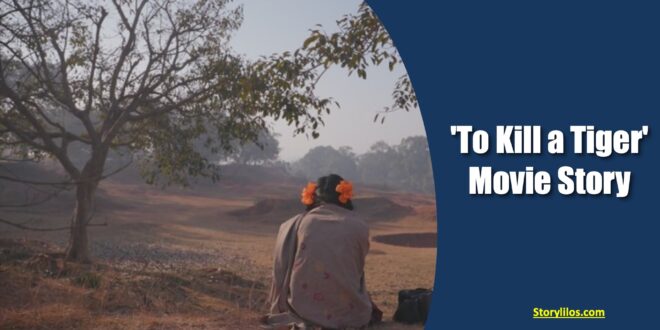In the poignant narrative of “To Kill a Tiger,” the movie story centers around an Indian farmer named Ranjit who embarks on the most challenging battle of his existence, striving for justice in the aftermath of his 13-year-old daughter’s horrifying ordeal as a victim of a brutal gang rape. This heart-wrenching decision to stand by his daughter and seek justice in a societal context where such actions are not just rare but virtually unheard of marks a defining moment in both their lives. The to kill a tiger movie story delves deep into the societal, emotional, and legal struggles faced by Ranjit as he navigates the complexities of the Indian legal system, societal stigma, and the personal turmoil of his family. His unwavering commitment to his daughter’s cause, against all odds, sheds light on the profound love and courage of a father willing to confront entrenched societal norms and prejudices for the sake of justice.
The narrative of to kill a tiger movie story
The narrative of to kill a tiger movie story further explores the transformative journey of Ranjit and his family, as they are propelled from their routine existence into the forefront of a legal and social battle that tests the bounds of their resilience, unity, and moral fortitude. Ranjit’s unprecedented journey is emblematic of the broader struggle against gender-based violence in India, highlighting the pervasive issues of victim-blaming and the arduous path to justice for survivors of sexual assault. Through its storytelling, “To Kill a Tiger” not only offers a vivid account of an individual family’s fight against injustice but also serves as a powerful commentary on the societal change needed to address such heinous crimes. It underscores the significance of standing up for what is right, even in the face of overwhelming societal pressure to remain silent, thereby inspiring a dialogue on the importance of support, justice, and healing for survivors of sexual violence.
The documentary “To Kill A Tiger,” directed by Nisha Pahuja
The documentary “To Kill A Tiger,” directed by Nisha Pahuja and nominated for the Academy Award for Best Documentary Feature, unveils the ‘to kill a tiger story’ of a father’s unwavering determination to seek justice for his daughter Kiran (a pseudonym), who, at the tender age of 13, was subjected to a heinous crime. Kiran was raped by three men from their own village during a wedding function in Jharkhand’s Bero district, setting the stage for a narrative that explores the intersection of personal tragedy, societal norms, and the quest for justice. Ranjit, a modest farmer, faces immense odds as he navigates the complexities of the legal system, societal pressures, and the stark reality of his family’s situation. Despite the villagers’ attempts to coerce the family into a compromise, which includes marrying Kiran to one of her assailants, Ranjit’s resolve remains firm. This ‘to kill a tiger story’ is not just about the legal fight but also about challenging deeply entrenched patriarchal norms that often seek to silence victims and prioritize communal reputation over individual justice and healing.
the ‘to kill a tiger story’ shows that implementation remains inconsistent
The documentary also highlights the broader societal and systemic challenges faced by survivors of sexual violence, particularly in rural and patriarchal settings where such crimes are often shrouded in stigma and silence. Despite existing laws aimed at protecting women and promoting gender equality, the ‘to kill a tiger story’ shows that implementation remains inconsistent, often leaving survivors and their families to navigate a path fraught with victim-blaming, intimidation, and a lack of support. Ranjit’s receipt of death threats and the community’s pressure to conform to traditional norms of “forgiveness” underscore the immense courage required to stand against such pervasive attitudes. Additionally, the documentary sheds light on the vital role of grassroots activists and organizations in supporting survivors and their families through their legal and emotional journey, albeit the narrative sometimes risks being overshadowed by these interventions. “To Kill A Tiger,” despite its critical acclaim and the importance of its message, prompts reflection on how stories of resistance and resilience are told, emphasizing the need for sensitivity and respect for the survivors’ agency and dignity. This powerful story, now available on Netflix, serves as a source of inspiration and a call to action, urging society to not only listen to survivors but to actively support their quest for justice and healing.
